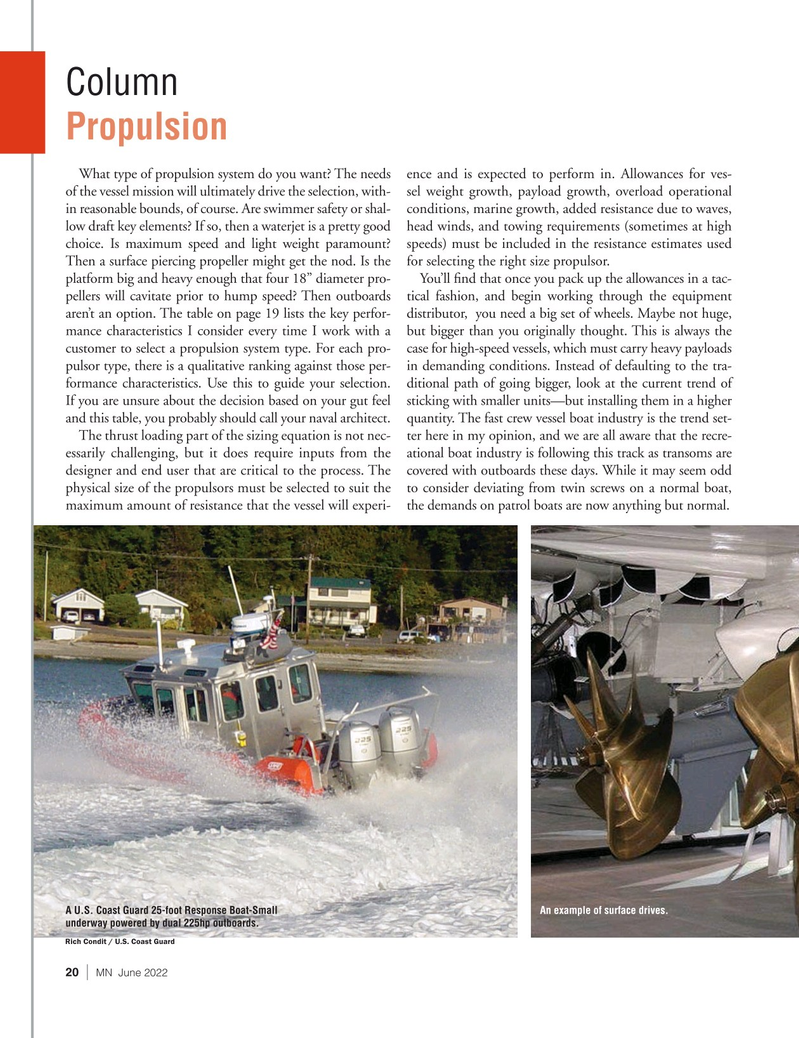
Page 20: of Marine News Magazine (June 2022)
Combat & Patrol Craft Annua
Read this page in Pdf, Flash or Html5 edition of June 2022 Marine News Magazine
Column
Propulsion
What type of propulsion system do you want? The needs ence and is expected to perform in. Allowances for ves- of the vessel mission will ultimately drive the selection, with- sel weight growth, payload growth, overload operational in reasonable bounds, of course. Are swimmer safety or shal- conditions, marine growth, added resistance due to waves, low draft key elements? If so, then a waterjet is a pretty good head winds, and towing requirements (sometimes at high choice. Is maximum speed and light weight paramount? speeds) must be included in the resistance estimates used
Then a surface piercing propeller might get the nod. Is the for selecting the right size propulsor. platform big and heavy enough that four 18” diameter pro- You’ll ? nd that once you pack up the allowances in a tac- pellers will cavitate prior to hump speed? Then outboards tical fashion, and begin working through the equipment aren’t an option. The table on page 19 lists the key perfor- distributor, you need a big set of wheels. Maybe not huge, mance characteristics I consider every time I work with a but bigger than you originally thought. This is always the customer to select a propulsion system type. For each pro- case for high-speed vessels, which must carry heavy payloads pulsor type, there is a qualitative ranking against those per- in demanding conditions. Instead of defaulting to the tra- formance characteristics. Use this to guide your selection. ditional path of going bigger, look at the current trend of
If you are unsure about the decision based on your gut feel sticking with smaller units—but installing them in a higher and this table, you probably should call your naval architect. quantity. The fast crew vessel boat industry is the trend set-
The thrust loading part of the sizing equation is not nec- ter here in my opinion, and we are all aware that the recre- essarily challenging, but it does require inputs from the ational boat industry is following this track as transoms are designer and end user that are critical to the process. The covered with outboards these days. While it may seem odd physical size of the propulsors must be selected to suit the to consider deviating from twin screws on a normal boat, maximum amount of resistance that the vessel will experi- the demands on patrol boats are now anything but normal.
A U.S. Coast Guard 25-foot Response Boat-Small An example of surface drives.
underway powered by dual 225hp outboards.
Rich Condit / U.S. Coast Guard
MN June 2022 20 |

 19
19

 21
21
